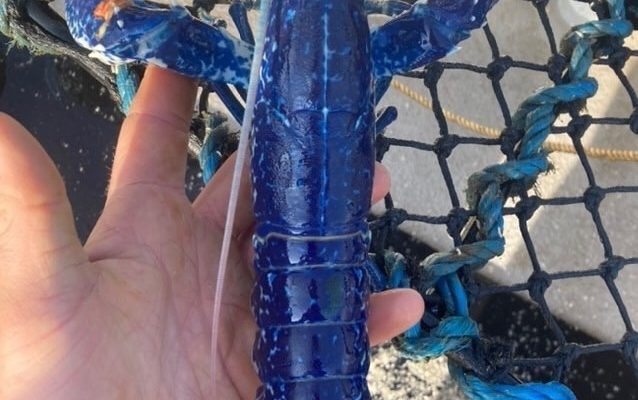This is not the first time that we have told you stories of incredible discoveries that feature animals with curious and unusual characteristics, ones you would never expect to see. Yet these creatures do exist, and from time to time they show themselves before our eyes, unveiling themselves in all their glory.
Think for example of lobster and lobster: what is the first color that you associate with these crustaceans? Probably red, right? And yet the lucky fisherman we’ll tell you about, hauling up his nets, caught one in a vibrant shade of blue. A very rare specimen that man has decided to let live.
#1

image credit: National Lobster Hatchery/Facebook
One in two million: this is, according to experts at the British National Hatchery Institute, the incidence of blue lobsters in the seas of our planet. It is therefore not difficult to understand their rarity. And Tom Lambourn, a 25-year-old fisherman from Cornwall, also understood it, after the first moment of obvious astonishment.
#2

image credit: National Lobster Hatchery/Facebook
The incredible lobster was there, in his hands and in his net, and its unusual bright color made it almost unreal. “I was fishing near Penzance, and this is only my second fishing season so I think I was very lucky,” commented the young Briton. “It was a very small specimen,” he recounted further, I couldn’t keep it, if it had been bigger I would have taken it to the National Hatchery. “
#3

image credit: National Lobster Hatchery/Facebook
So, after taking some photos as a souvenir and testimony to his incredible discovery, Tom, who said he never intended to eat the blue lobster, decided that the animal – about 30 cm long – would return to the water. He released it and will certainly remember that experience forever. Not only because of the peculiarity of the animal but also because fishermen who come across lobsters of this color are convinced that this is an auspicious sign. It is therefore absolutely forbidden to eat it, as if it were decided by an unwritten code.
#4

image credit: Tom Lambourn/Facebook
If you are wondering how a lobster can take on such an unusual color, know that the blue color is due to a protein, produced in higher than normal amounts, which combines with a red carotenoid molecule in a true genetic defect, giving birth in the hue of sapphire. The color blue is also a problem for these lobsters: it is more difficult for them to hide, and therefore they can be more easily captured by predators.
This specimen was certainly lucky to find its way into the hands of young Tom, who went from being a predator to being a friend, leaving him free to live and roam the sea, hopefully for a long time.



